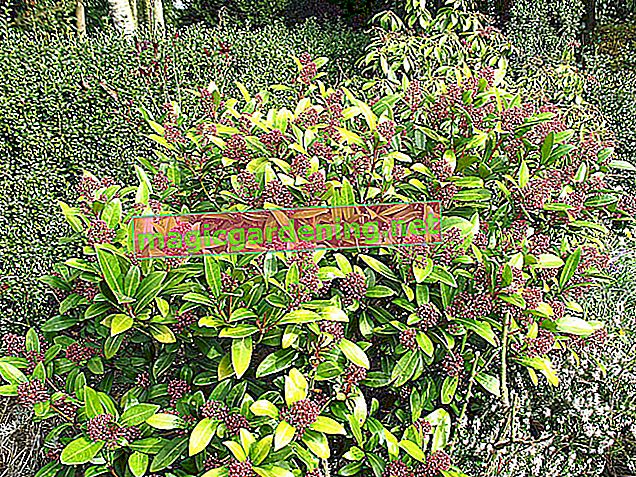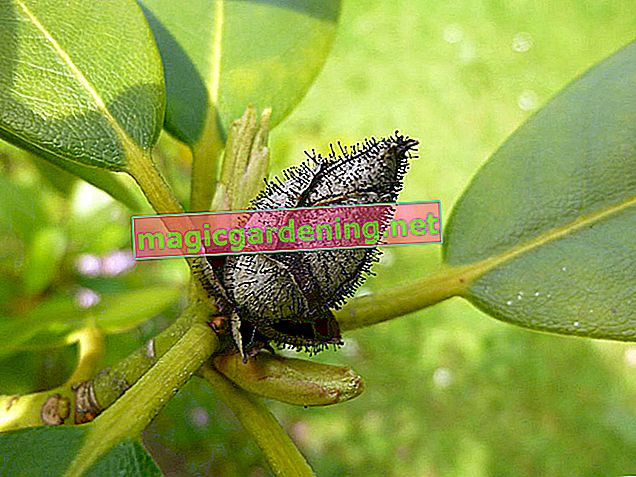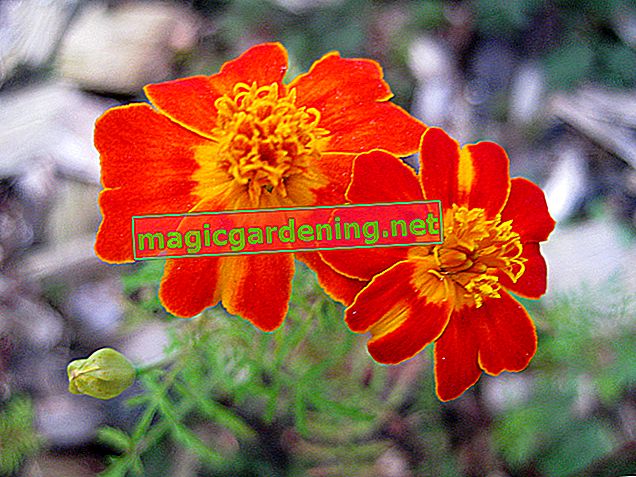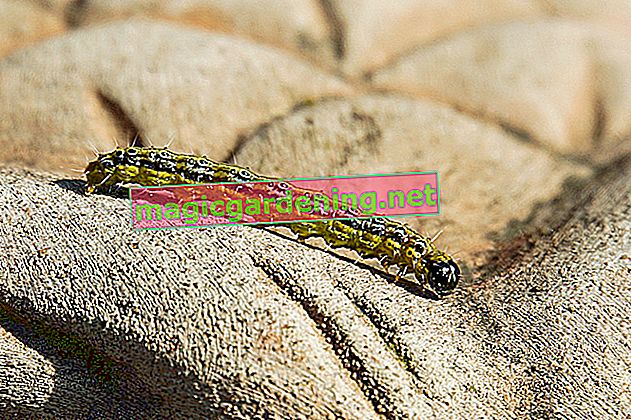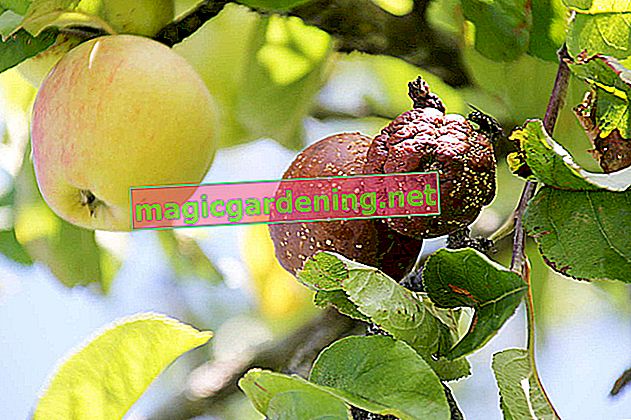
The many damaged images of the apple tree
The apple tree is one of the most common fruit trees in commercial cultivation and in private gardens. Once pests or diseases have invaded a certain region, they usually find a broad breeding ground for further spread. For a targeted countermeasure, it is important to clearly recognize a certain infestation and to differentiate it from sometimes very similar damage patterns.
also read
- Common diseases of the peach tree and their treatment
- Recognizing diseases in the plum tree: tips on how to proceed and treatment
- The pruning of the apple tree
Animal damage on the apple tree
An important threat to the health of trees and the expected apple harvest are various insects that feed on parts of the fruit, the tree sap or the leaves and also use them as breeding grounds. The following animal species are among the insects that can be particularly dangerous to apple trees:
- Aphids
- the codling moth
- the apple louse
- the apple rust mite
- the apple blossom cutter
- the fruit tree spider mite
- the little frost wrench
The various pests are usually difficult to spot with the human eye, even due to their small body size. On the one hand, however, they can be recognized by damage to leaves and fruits, and on the other hand, by webs and other residues.
Fungal attack as a danger that should not be underestimated
Fungal infestation can pose a particularly serious threat to the apple trees in your garden, because fungi spread even faster than animal pests in a tree population and can seriously damage its vitality. The most important fungal diseases in the apple tree include the following types:
- the apple powdery mildew
- the apple scab
- the Monilia fruit rot
- the soot stain disease
If a fungal attack is noticed on the apple trees, quick action with suitable countermeasures is advisable. Fungal diseases can spread very quickly and infect other apple trees in the garden or in the neighborhood.
Measures against various pests and fungal diseases
Basically, it never hurts to provide the apple trees with a higher level of vitality and thus better resistance to harmful influences through precisely coordinated fertilization and regular tree pruning. In particular, the formation of a light and well-ventilated treetop is of great importance, since rapid drying of the leaves after periods of rain counteracts the spread of fungal infestation. In addition, many birds and insects, as natural predators of the apple tree pests, can find and remove their food more easily in the light treetops. Chemical sprays should usually only be considered as a last resort, as they usually pollute the current harvest and make it inedible.
Fight the main apple tree pests
Images of the common damage patterns on apple trees often show eating spots on apple blossoms and fruits filled with brownish remains. These indicate the larvae of the so-called codling moth, which can be contained with a corrugated cardboard ring around the trunk from spring. The larvae like to settle under this cardboard ring from spring and can be removed and destroyed with this in June or July. The various subspecies of the frost moth, on the other hand, can be fought a little better because they move along the trunk bark and can be caught with a glue ring available from specialist shops. Typical images of an infestation with the frost spider are leaf shoots connected by webs and perforated leaves. The apple louse sucks on the underside of the leaves of the apple tree,which leads to leaf deformation. Infested areas can be removed generously with the summer cut and the cut material burned.
Take action against fungal attack on the apple tree
The best protection against the dreaded powdery mildew is to avoid it with a tree crown formed with targeted cuts and suitable wound care at large interfaces so that the fungal spores cannot penetrate the inside of the tree. Typical images of an infestation with Monilia fruit rot are brown rotten fruit mummies, which are dotted with white mold spots. One control measure against further spread is the regular collection of infested fruits and the removal of fruit mummies during winter pruning. In wet summers, the fungus Gloeodes pomigena causes soot-like coating of the apple peel in sooty stains. This does not exclude consumption after washing, but can lead to faster deterioration of the fruit in storage.As a countermeasure, you should also force the formation of a lighter tree crown here.
Tips & Tricks
In addition to animal pests and fungal diseases, there are also other harmful images of diseases on the apple tree. Glassiness is the term used to describe watery, translucent areas of the flesh below the skin. This metabolic disease occurs above all with excessive fertilization and strong shoot growth after heavy pruning. The so-called speck is expressed by brownish spots in the pulp, but is initially safe for consumption. Countermeasures include reduced fertilization, liming the tree and switching to summer pruning.




